You know the importance of employee engagement, connectivity and effective communications but does your leadership?
With something as important as employee engagement, it’s critical that your people (especially those at the top) have a clear outline of what your organisation is trying to achieve and how something like an intranet platform can help you achieve your goals.
This will help you to establish a much more transparent vision between the benefits of an intranet and your organisation’s overall goals.
In this blog we’ll cover:
- What is a Business Case?
- Preparation: Making your Business Case
- Assess your Existing Intranet/Digital Workplace
- Establish your Opportunity
- Intranet Requirements
- Data Collection
- Prioritise your Objectives/Goals
- Expected Business Impact
- Intranet Marketplace
- Intranet Business Case Template [FREE DOWNLOAD]
What is a Business Case?
A business case was traditionally used to justify the cost and resources requirements. However, it is now one of the most powerful tools at your disposal when it comes to re-designing, investing or building an intranet.
If it is produced and delivered effectively, a business case will:
- Define the opportunity and business need
- Set out the value and return of an intranet clearly
- Outline the scope, including resources, timing and cost
- Evaluation options and make a recommendation
- Ensure you gather the support to deliver on the project
A business case can make or break your intranet project.

Preparation: Making your Business Case
For many, the process of compiling a business case can seem a daunting task. In this blog, we’ll outline the key steps you’ll need to help you build an efficient business case.
Identify your Stakeholders
You should start by looking company-wide and identifying who your stakeholders are. Different stakeholders will be higher up than others and therefore hold different amounts of power in terms of the decision-making process.
The best way to identify your stakeholders and determine the level of investment they carry is by creating a simple stakeholder map. Assign each stakeholder group a power level in the grid to visualise which design maker you should speak to first.
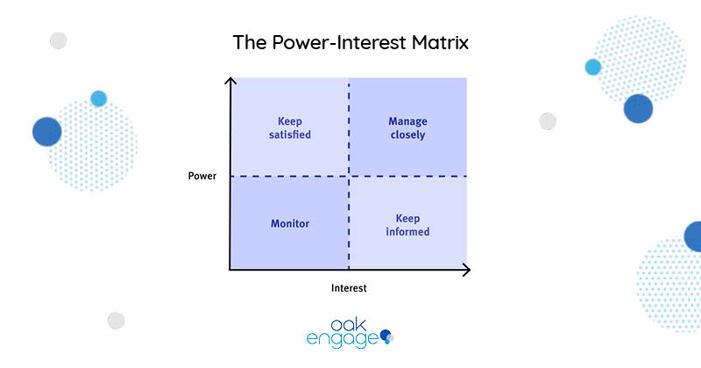
Once you have determined which stakeholder is the highest priority for your company, you can go further and identify the priorities you’ll need to consider for each decision maker in your business case.
You should consider this question:
What are their concerns?
Your stakeholders should fall into the four categories (IT, HR, Communications and Executives), so let's take a look at what specific concerns or questions they may have that relate to your intranet project:
IT
This group will have some important concerns that will need to be addressed. You should begin by addressing the overall security of the intranet platform that you are proposing. As well as discussing where it will be hosted, any potential integrations, and whether it requires IT resources to build.
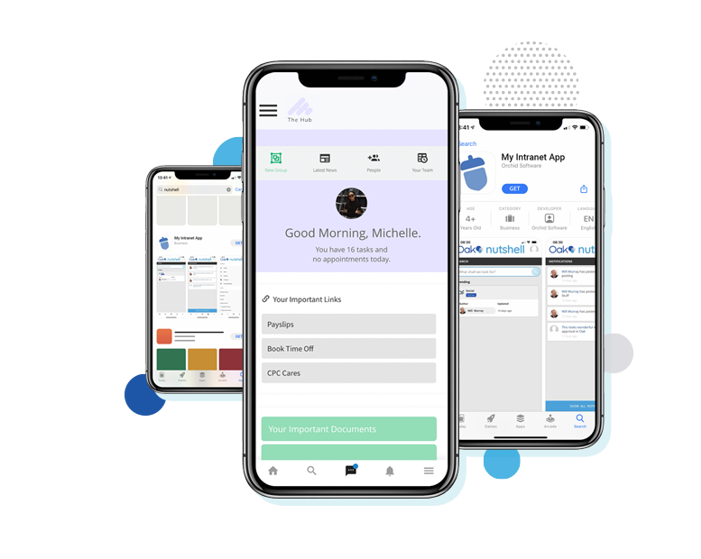
Internal Communications
Internal Communications professionals usually want tools and processes that allow them to put out important company news, events and employee information. Discussing how the intranet will impact their ability to reach employees and ensure their messages are received and being read is a good place to start with this group.
Human Resources
This group ensures the hiring, employee retention, and overall happiness of employees and will almost always have a vested interest in the success of your intranet platform.
You should discuss elements such as employee onboarding, employee engagement and company culture.
End Users
If you don't address the end-users concerns from the start, you risk low engagement with your new intranet.
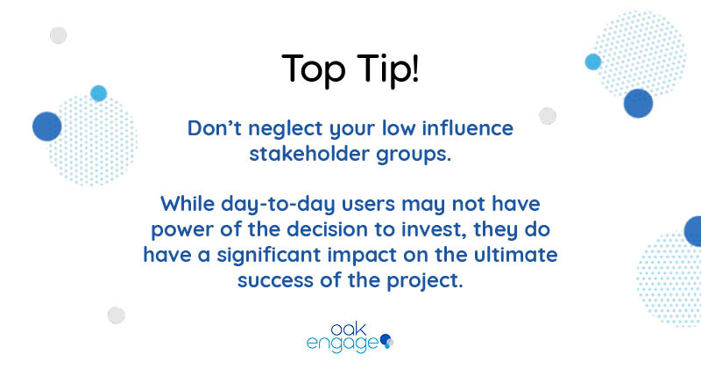
Examples of what a typical intranet end user will be looking for:
- Easy system to use
- Can easily find information quickly
- Communicate with employees across different departments
- Easy upload of content
- Collaborate better with their team/leadership
How will you deliver your Business Case?
How you deliver your business case is essential.
Putting together a written plan that sets out your evidence will massively help you to embed your message to stakeholders.
Depending on your company, you may find there are processes and existing templates to be used when bringing together a business case.
These could include the specific needs or requirements that your company needs addressed.
Requirements & Timing
You should always speak to stakeholders and/or any decision makers to identify any potential restrictions before beginning your intranet project and plan.
For example, some industries will likely have increased levels of compliance or restrictions when it comes to having company information on their intranet.
If this factor concerns your company, all of these things will need to be considered in your project.
Timing can vary across different industries in terms of how long the project will take to develop. You will need to take into account when yearly budgets for your company are decided. This will also have an impact on when you’ll be able to start implementing your intranet.
Assess Your Existing Intranet/Digital Workplace
Look at your current intranet and identify areas for improvement, considering user needs. You should also identify benefits of your current intranet software to understand what demands you have for an intranet renewal or a new intranet software.
Outline specific challenges of your current intranet. Remember to list the features and functionalities that work well for your employees. Include these features in your business case.
Recommended Reading 📖 31 Modern Intranet Features Your Company Needs
Assessing the problems with your current intranet/digital workplace gives you a framework to work with, so you can start looking for possible intranet solutions that work for you.

Here are 4 types of frequent intranet problems that companies have:
Technical problems
- Low performance
- Errors when uploading content
- Bad search engine
- Problematic login system
Social intranet issues
- Low employee engagement
- Lack of collaboration
- Poor information sharing
- Usage is declining
- Lack of connectivity
Usability and information structure
- System is difficult to use
- Employees cannot find information or documents easily
- Out of date or inaccurate information
- Different departments using different methods to store information
Productivity problems
- Cannot demonstrate ROI
- Complaints that the intranet is causing inefficiencies
The idea of assessing your current intranet is to gain an understanding of what challenges employees face on a day-to-day basis.
Establish your Opportunity
You should start by asking yourself, “what needs are not met within your business that an intranet could solve?”
Establishing your opportunity means outlining the specific problems in your company that your intranet is supposed to solve.

To increase the opportunities for your intranet, you need to explore your business objectives.
There are two categories for business objectives:
- general objectives
- specific objectives.
Set your General Objectives - OKRs
General objectives are usually high-level and may be difficult to quantify. However, these objectives should be thought about in full detail as they will become the core objective for your solution.
Start by answering these questions:
- What are the current challenges being faced from department to department?
- Have any general objectives already been set out by departments? If so, could an intranet help address these?
Some examples of general objectives could include:
- Improve connectivity and communication
- Increase collaboration
- Increase employee retention
- Make knowledge sharing easier
- Increase employee engagement
Set your Specific Objectives - OKRs
Specific objectives are usually more specialised than general objectives. They are often of value such as cost or percentage.
Some examples of specific objectives could include:
- Enhance knowledge sharing by 60%
- Increase business growth by 40%
- Improve revenue by £20,000
- Increase employee retention by 70%
- Increase employee engagement by 30%
Identify Pain Points and Benefits
The main question is:
How do you go about identifying stakeholders' and employees challenges and pain points?
Getting the support you need for your intranet project means that you will have to start asking company wise questions. You need to listen to the different requirements and priorities of each department.
Start with an organisational chart like this one and write down the potential individuals and departments you’ll need to speak to in order for you business case to take off.
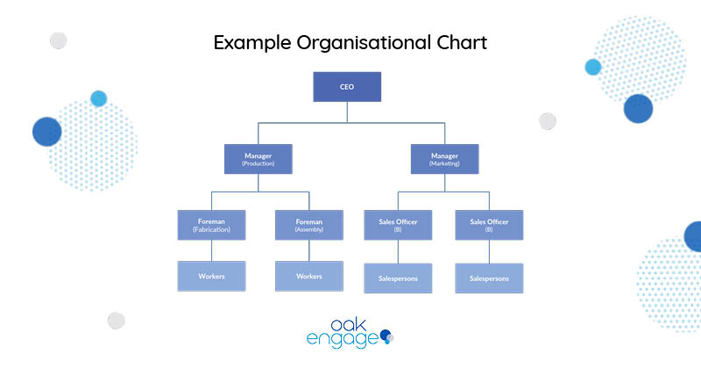
It’s worth breaking down objectives by department and consider how an intranet will impact and benefit each one. For example:
|
Department |
Example department objective |
Intranet approach to achieve objective |
|
Sales & Marketing |
Decrease the time to access company information |
Advanced search and integrations |
|
HR |
Faster onboarding/training |
Up to date company information and knowledge base |
|
Admin |
Reduce email traffic |
Instant messenger for cross departmental communication |
|
Executive team |
Keep employees informed on company news and objectives |
Timeline and news features for all company information to be accessed in one place |
Intranet Requirements
Requirements for a new intranet could vary, depending on how in the company you ask. Although, the requirements are usually divided into four groups:
- The technical aspect: Your company should require an intranet system that can provide modern features and performs a lot better than your current system.
- Usability and information structure: Your new intranet system should be easy to use.
- Productivity: Employees should save time by using the intranet.
- Communication and cooperation: Your new intranet system should encourage employees to communicate across departments.
Once you’ve identified your digital workplace requirements, it will be easier to create your business case, establish a criteria and eventually, succeed in implementing the new intranet system.
The time you spend on identifying your goals and requirements is time saved when it comes to stakeholder management later in the project.
The process will ultimately increase the success of your new company intranet.
Data Collection
In terms of the stakeholders, this is the most important part of your business case. It sets out the financial aspect of your intranet project.

This will serve as a justification for your investment in whatever vendor you may choose.
Using the objectives you've already explored in the opportunity section, you will determine the specific gains from an intranet within your business.
How does your organisation measure success?
You need to ensure that you are taking the right approach and using the correct metrics, before you begin calculating the return and value to your business.
These may include:
- ROI of Intranet Implementation
- Cost Benefit Analysis
- Total Cost of Ownership
- Internal Rate of Return
- Employee Retention & Turnover
By identifying the metrics used by your stakeholders, it will ensure you answer all their priorities when evaluating the return cost.
Prioritise your Objectives and Key Results
An intranet project is a large-scale transformation process which involves multiple departments in your organisation.
Although the business case process is designed to provide a thorough overview, it can't realistically work out the return or value of every single objective.
That's why you should narrow your objectives to a list of 4 or 5 (considering the main stakeholders in the project).
Consider which objectives and key results they are likely to consider the most important:
- Which objectives do they tend to use as the basis for decision making?
- Which key results are likely to deliver the most significant returns for your organisation?
Once you envision how your proposed intranet can align with your business strategy, you should start planning out your objectives. These objectives can come from multiple sources such as focus groups or pulse surveys, but regardless of where they come from, there are typically 4 reasons/ objectives that organisations have to pursue an intranet.
Workplace Culture/ Employee Engagement
There are multiple statistics that correlate workplace culture and employee engagement with higher levels of productivity.
In a recent engagement report by Gallup, it was revealed that highly engaged business units achieve a 10 percent increase in customer metrics and a 20 percent increase in sales. Essentially, an engaged culture improves employee performance.
How an intranet helps
An intranet solution is a fantastic tool for combining the professional and social environments in a way that enhances organisation’s culture and employee engagement. Using applets such as hubs, communities and timelines all helps improve workplace culture.
Collaboration
As more and more businesses offer remote working options for their employees, we can no longer rely just on in-person collaboration.
How an intranet helps
An intranet solves collaboration challenges by providing a central platform for employees and teams to connect, engage, and collaborate. Whether it’s through shared discussions on documents, an intranet helps reduce unnecessary meetings or incorrect or outdated document versions. It also helps organisations adapt to the change of new working ways.
Knowledge Management
Almost every company struggles with isolated knowledge, especially when you don't have the right tools you need to facilitate it. Organisations who have poor knowledge management suffer from poor productivity and low employee engagement.
How an intranet helps
An intranet allows users to get the help they need instantly. Knowledge Base features provide employees with a wealth of information and support so that you can get the most out of your intranet solution. From FAQs's to how-to guides and walk-through videos, Knowledge Base is ideal for new starters and remote workers.
Communication
A typical knowledge worker spends seven hours per week reading, sorting, and replying to emails. This equates to 432 hours or 54 days per year.
How an intranet helps
An intranet helps reduce email usage as conversations now move to the intranet platform, where instant messaging can be used. Information also becomes searchable and browsable, creating a knowledge base the entire business can benefit from.
Expected Business Impact
Once your OKRs have been identified, it's important to determine the value of each one and how an ROI can be measured.
If you’ve identified a broad objective with no value, here are five questions that can be used to strip away the layers until you find a measure to assign to it.
First determine an objective and then ask yourself:
- How is it measured?
- What is it now?
- What would you like it to be?
- What is the value of the difference?
- What is the value over time?
For examples, if we can break down a specific objective with a hard measure:
Decreasing the information search time
- How is it measured?
Time spent searching/average of employees x100
- What is it now?
2 hours of a day spent searching for information
- What would you like to be?
Reduced to 15 mins
- What is the value of the difference?
2 hours a day = 10 hours per week per employee
- What’s the value over time?
10 hours per week x 1 year = 261 working days wasted
Identifying the return for soft measures
Quantifying the impact for a broad objective can be difficult to measure. However, you can instead relate the achievement of that objective to wider business objectives.
Here is an example of a broad objective with soft measures:
Improved Productivity
- How is it measured?
Pulse Survey results (e.g. how productive do you feel at work?)
- What is it now?
Average score 3/10
- What would you like it to be?
Average score of 8/10
- What is the value of the difference?
When employees are more productive, the workforce will become more engaged.
- What's the value over time?
Increased engagement, increased sales and improved company culture.
Intranet Marketplace
You’ve identified your stakeholders and established your opportunities, now it's time to start outlining your intranet plan.
Looking For Alternatives
By the time you reach the point of developing a business case, you’ve probably already selected an intranet solution. However, this section will demonstrate to your decision makers that you have taken a detailed approach to researching all possible options.
When deciding on an intranet, options that are typically evaluated at this point include:
- Do nothing
- Sharepoint
- Oak Engage
- Self Build
- Other Vendors
But how do you identify the right intranet option for you?
You can quickly identify the big players using a Google search. Specialist groups on Linkedin or online communities with intranet professionals also provide valuable insight from existing users.
Analysing Alternatives
Next, you will need to analyse each of your selected options in line with your objectives that we went though earlier.
Even if you know which option you will be putting forward to your decision makers, it's best to be as transparent as possible. Your list of vendors will usually fall into three categories:
Functionality
- Consider the actual features and capabilities of the solution.
- Compare the features from each of your options and match them to your objectives.
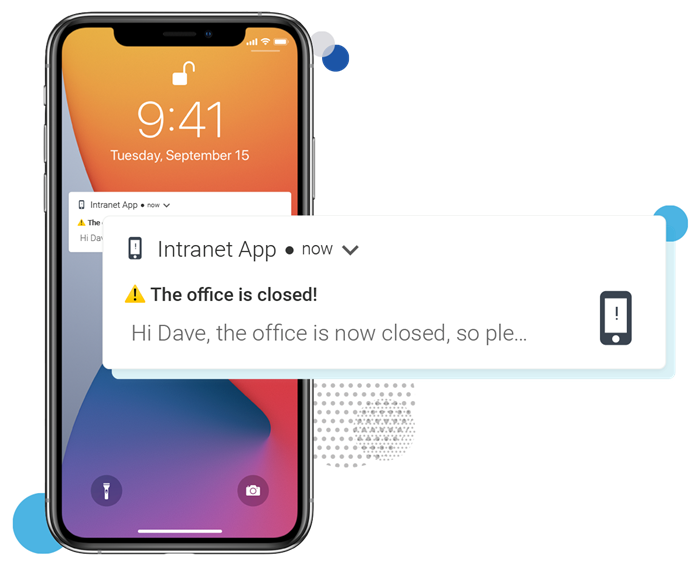
Cost-benefit analysis
- Consider the investment, in terms of direct and indirect cost alongside the returns.
- Add any additional resources that fall outside the software itself (for example, launch and training activities)
The ‘X factor’
- Consider any additional considerations for your potential solutions such as experience, reputation, stability of company, similar customers and cultural match to name a few.
Direct Costs
Your direct costs will vary depending on the solution you select. However, you will need to consider both the upfront and future cost.

Examples of direct costs for an intranet include:
Technology
- Software
- Maintenance
- Networking
- Hardwear
- Integration
- Development
Implementation
- Strategy
- Project Management
- Design
- External Training
You should not be tempted to cut back on the implementation costs. Evidence shows that 75% of business and IT executives anticipate their software projects will fail due to cutbacks.
Indirect Costs
Your indirect costs will involve activities and resources that fall outside the quote direct cost from your intranet vendor.
A successful intranet will often include launch activities which will have an additional cost that you will need to consider. These things are key to the initial and long-term success of your company intranet and should be considered in the part of your plan.
Indirect costs could include:
- Employee resources
- Management changes
- Launching activities
- Support costs
- Internal training for employees & leadership
Cost Benefit Analysis
The next step you should take is to compare like-for-like costs for different intranet vendors. Building a cost comparison and analysis on your selected options will bring together all the information you need in a clear and concise view.
Your stakeholders and decision makers should be able to make a like-for-like comparison between the different options that you have chosen.
Assessing Risk
Using the analysis step recently, you can start identifying any potential risks. First start by writing out your goal in simple terms. This will clarify what it is you’re trying to achieve. Then you should include a list of things that might risk your objective.
It should look something like this:
“Our main goal is to acquire intranet software that improves employee engagement, centralises company information and increases business connectivity. It should take approximately two months to migrate previous documents and train all employees on the software. The project will require the help of …. And the potential risks include…”
Assessing the risk in your business case is an important step to convince and win over your decision makers to secure your intranet investment.
You should use this step to show you’ve thought out the risks and you know how to plan in case anything goes wrong.
There are two distinct types of risk:
- Implementation risk: Refers to the proposed investment (your chosen intranet software) that may change from the original plan.
- Outcome risk: Refers to the needs of your organisation. Consider the scenario if they are not met. This will risk the outcome of the project.
You should set out the potential risks in terms of how likely they are to occur and the impact that they could have on the project or business.
Making Your Choice
The final step is making a choice on your intranet solution. Make sure you are delivering your intranet business case in a persuasive way to get your stakeholders and decision makers on board with your decision.
Here at Oak, we combine all the intranet features that employees love, and more, to create an innovative workspace solution to suit your company needs.
Choosing the best company intranet can be a daunting process that’s why we support you every step of the way. You'll receive help and guidance from our experts right from the beginning.
If you decide we’re for you, you’ll have access to regular, free online webinars and strategy days to maximise your knowledge and help you get what you need from us.
You should always end on a positive note and if you are the one presenting, ensure that you deploy the same approach as your written business case, confident and persuasive.
Intranet Business Case Template
Now it's your turn to collect all the research you’ve accumulated and present it to your stakeholders. To help bring your business case to life we’ve created a free template to create your own business plan.


![Intranet Business Case [Step by Step Guide + Template]](/media/ytkftpmf/blog-header.png?width=50)

